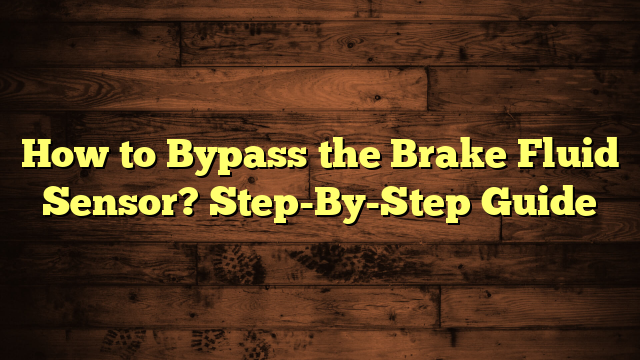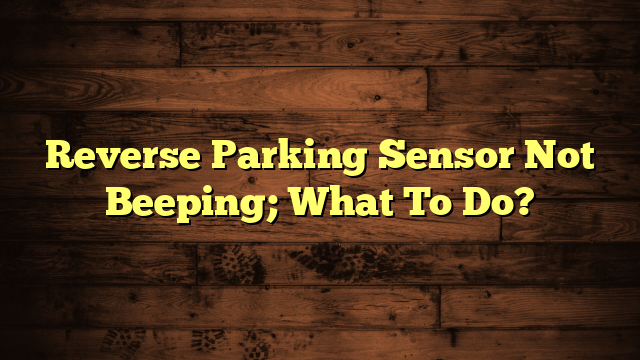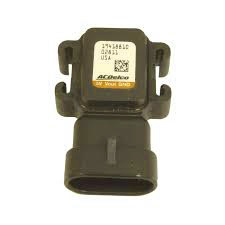Does TPMS Sensor Affect Traction Control? (What You Should Know)
“Does TPMS sensor affect traction control?” can be a question that you seek the answer to, particularly when navigating the intricate relationship between vehicle safety systems. Tire Pressure Monitoring System (TPMS) sensors, while primarily focused on ensuring optimal tire pressure, indirectly influence the traction control system, which is also a key player in vehicle stability and safety. From this discussion, you will learn how TPMS sensors work, their indirect impact on traction control, and the correlation between low tire pressure and traction control alerts. Our guide offers insights into these sophisticated systems, enhancing your understanding of how they work together to ensure a safer driving experience. Then, let’s get started!
How does the TPMS Sensor Work?
Basically, the Tire Pressure Monitoring System (TPMS) sensors monitor the air pressure in each tire and send this data to the vehicle’s onboard computer system. Thus, the driver can know when the tire pressure is lower or higher. The entire procedure has been broken down below for your ease.
- Monitoring Air Pressure: TPMS sensors, located in each tire, continuously measure the pressure inside the tire. These sensors can be either direct or indirect. Direct TPMS sensors measure the pressure and sometimes the temperature inside each tire, providing real-time data.
- Sending Information: After that, the sensors transmit this information wirelessly to the vehicle’s onboard computer system. This transmission typically occurs through radio frequency signals.
- Alerting the Driver: When the TPMS detects that the pressure in one or more tires is significantly below the recommended level, it triggers a warning light on the vehicle’s dashboard. This alert is usually an icon of a flat tire or an exclamation mark inside a tire. According to your vehicle model, it can differ.
- Indirect TPMS: Some vehicles use indirect TPMS, which works through the ABS system rather than using physical pressure sensors. It monitors tire rotational speeds and infers pressure from these readings.
Accordingly, with the help of a TPMS sensor, you can maintain proper tire pressure, which is essential for safety, fuel efficiency, and tire longevity.
Does TPMS Sensor Affect Traction Control?
No, in general, the TPMS sensor does not affect traction control since they are two separate systems.
However, they play a crucial role in maintaining tire health, which indirectly impacts traction control. Indeed, traction control systems may be disabled in some car models when the TPMS shows low pressure.
Let’s see how the TPMS sensor indirectly impacts your traction control.
- Tire Pressure and Traction: Proper tire pressure is essential for optimal traction. TPMS sensors ensure tires are correctly inflated, indirectly supporting the traction control system’s effectiveness.
- Safety and Stability: While TPMS sensors don’t communicate with the traction control system if you maintain the recommended tire pressure, it will ensure better vehicle stability and grip, which are critical for effective traction control.
- Preventing Tire-Related Incidents: Under-inflated tires can lead to reduced traction, increasing the risk of skidding or losing control. By alerting drivers to low tire pressure, TPMS sensors help in avoiding such situations.
- Enhanced Vehicle Performance: Properly inflated tires, as monitored by TPMS, contribute to uniform tire wear, better fuel efficiency, and overall improved vehicle performance, all of which complement the traction control system’s function.
- Indirect TPMS Systems: Vehicles with indirect TPMS use ABS wheel speed sensors to infer tire pressure. While these systems are more about tire pressure monitoring, they still rely on components integral to traction control.

Can Low Tire Pressure Cause Traction Control Light to Come On?
Yes, low tire pressure can cause the traction light to come on, especially in systems where traction control and tire pressure monitoring are interconnected. This is because the traction is also reduced when there is low tire pressure.
The following breakdown will clarify the facts better.
- Impact on Wheel Speed Sensors: Low tire pressure can affect the diameter of the tire, leading to differences in wheel rotation speeds. Traction control systems, which rely on wheel speed sensors, may interpret these differences as traction loss and activate the warning light.
- Vehicle Stability and Handling: Low tire pressure adversely affects vehicle handling and stability, too. The traction control system, sensing these stability issues, might engage and illuminate the warning light as a precaution.
- Indirect TPMS and Traction Control: In vehicles with indirect TPMS, the system uses ABS wheel speed sensors to monitor tire pressure. Abnormal readings due to low pressure can cause both the TPMS and traction control lights to illuminate.
Therefore, when the traction control light is on, it’s important to check tire pressure and address any discrepancies. Properly inflated tires are essential for the optimal functioning of both the TPMS and traction control systems.
Watch this one,
Video Credits – NARPRO






